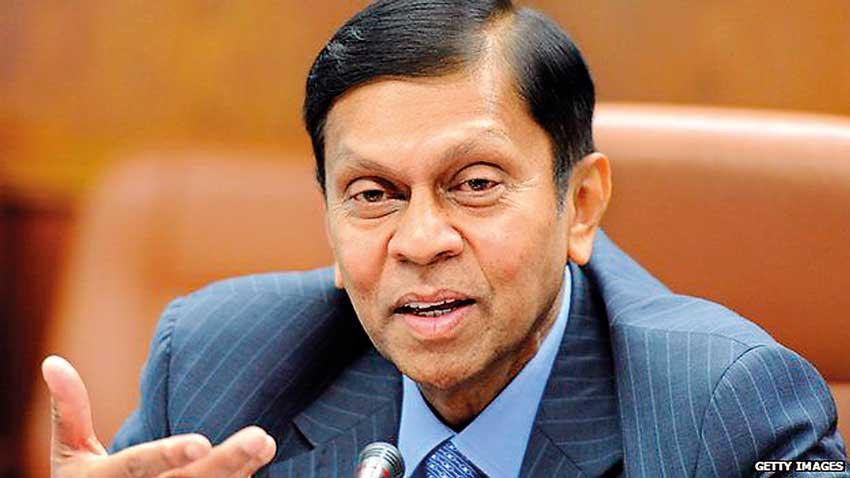30 Dec 2021 - {{hitsCtrl.values.hits}}

Ajith Nivard Cabraal
In accordance with the repeated assurances given by the officials to their ability to increase the country’s foreign currency reserves up to US $ 3.0 billion by the end of the year, the Central Bank yesterday said that the reserves had reached to around US $ 3.1 billion as of December 29 and would remain at that level through the remainder of the year.
In a statement issued yesterday, the Central Bank said that the “expected foreign currency inflows are forthcoming” and the “recent inflows” had put the reserves at the
current levels.
However, the Central Bank kept mum on the way in which the reserves went up from US $ 1.6 billion by end-November to US $ 3.1 billion, not even giving a hint as to where the funds came from.
Sri Lanka, since March this year, had US $ 1.5 billion equivalent Chinese yuan swap line from China under stand-by and the Central Bank was lately “contemplating” on whether to draw it down.
But yesterday’s Central Bank statement gave no indication as to whether that facility was drawn down.
Central Bank Governor Ajith Nivard Cabraal rejoiced the development in a Twitter message, while scores of people continue to stand in queues for kerosene and milk powder, which are still in short supply, as importers are finding it difficult to source dollars to pay suppliers.
“In keeping with our previous announcements, the official #reserve position of the @CBSL has today reached appox USD 3.1 billion and will remain around that level by end-2021 as well. #RoadMap #SriLanka #GoSL,” Cabraal tweeted.
Sri Lanka’s foreign currency reserves fell to US $ 1,587 million in November, hitting a new depth, which is barely sufficient for a month of imports.
Having lost patience, the country’s business community last week urged the policymakers to either make good on the promises made in the Central Bank’s six-month road map or to seek the International Monetary Fund (IMF) assistance to overcome the hardships they face in carrying out their business operations. The earlier assurances given by the Central Bank to update the markets on the progress made on the inflows listed in the road map on November 30 never took place, instead it tightened the dollar sell down rules in a clear sign of desperation for foreign currency.
However, in response, the Central Bank yesterday said, “Foreign currency inflows in connection with several other facilities that are under negotiation at present, are expected to be realised in the early part of January 2022,” but gave no specifics, failing the private sector once again, which expects predictability and certainty. Instead, as typical, the Central Bank blamed the back-to-back rating downgrades, the last of which came from Fitch Ratings and found a scapegoat in it for the delay caused in some of the expected inflows. “Such rating actions also weighed negatively on investor confidence, resulting in undue delays in certain expected foreign currency inflows, which may have materialised earlier, if not for such unwarranted and questionable rating actions,” the statement said. While Sri Lanka may be able to survive the prevailing foreign exchange crunch with stop-gap measures for now—including the settlement of the US $ 500 million sovereign bond due next month— its ability to emerge unscathed or avoid a debt default largely depends on the ability to strike deals for more medium-term loans with friendly nations and how quickly the envisaged recovery in tourism, worker remittances and direct investments happens.
The Central Bank said with the realisation of the recent measures surrounding worker remittances, dollar conversions and robust merchandise exports, it remains “confident that the reserve position will remain at comfortable levels throughout the year 2022”.
24 Nov 2024 15 minute ago
24 Nov 2024 21 minute ago
24 Nov 2024 1 hours ago
24 Nov 2024 6 hours ago
24 Nov 2024 7 hours ago